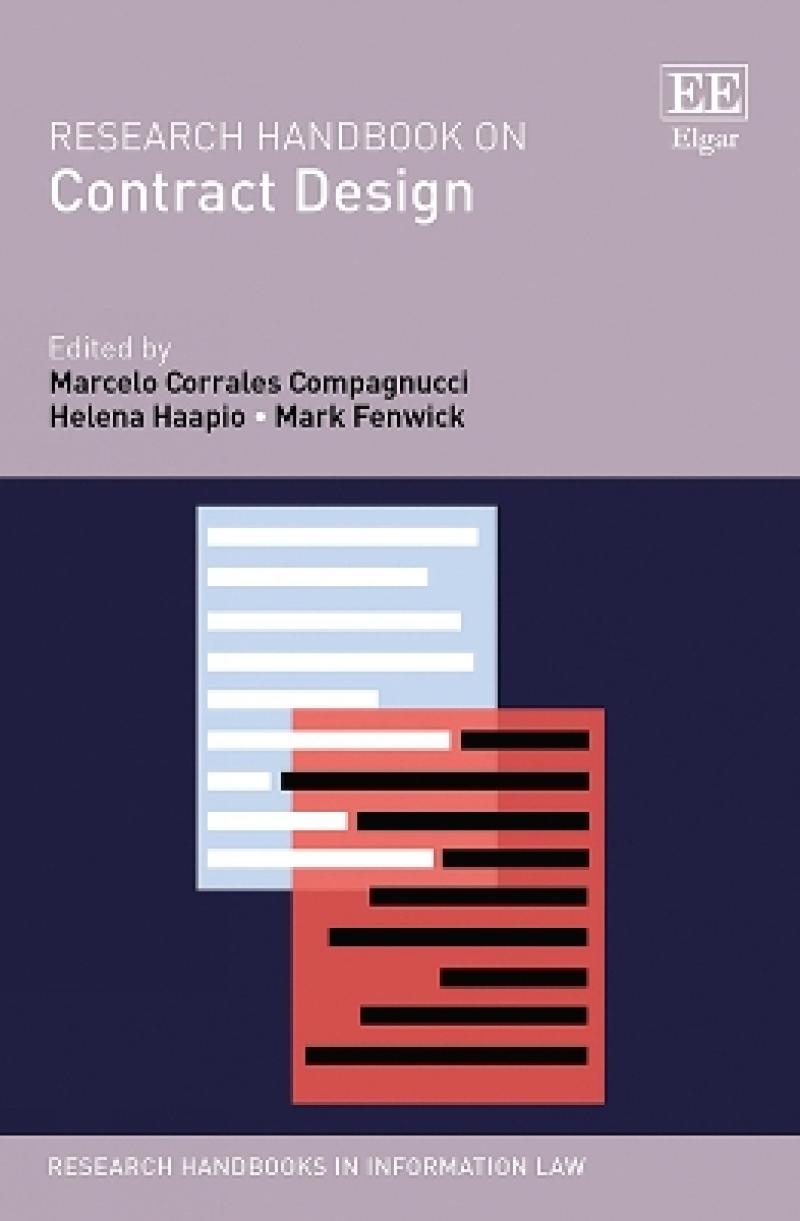<i>‘This volume arrives at a time when dissatisfaction with traditional legalistic forms of contract drafting, and the possibilities of more innovative user-centred modes of contract design, are on the rise.</i>
New sub-disciplines often arise through new interactions between established disciplines and contract design is no exception. The inclusion of information designers, alongside leading contracts scholars, is therefore an important positive feature. There is also jurisdictional diversity with chapters outlining developments from Europe, North America, Africa, Asia and Australasia. Contributions from innovative contract design practitioners and consultants further enrich the perspectives in the volume.
A key challenge with edited collections is often to capture the range of activity and diversity of voices within a coherent message to readers. The editors have done this admirably and the contributions all show facets of the transformatory potential of contract design, and the reimagination of contracts from mere clarification and risk management documents into processes and outcomes that facilitate understanding, agency and ongoing collaboration for contract users.’
- Michael Doherty, University of Lancaster, UK,
<i>‘This Research Handbook is a remarkable effort from a team of top researchers from multiple disciplines to promote contract design. The contributors emphasize that contracts are not only legal tools for lawyers to manage legal risks of their clients, but primarily business tools that create win-win outcomes. Promoting a fresh user-centric approach to make contracts better by design for all stakeholders in the contracting community, this book is recommended to everybody who drafts, designs or implements contracts in business.’</i>
- Soili Nystén-Haarala, University of Lapland, Finland,
<i>‘This Research Handbook is a treasure trove of cutting edge research on contract design. With its wide range of topics, the book provides one-stop shopping for all stakeholders in the design process–lawyers, managers, designers, and others who are interested in a user-centric approach to better contracting.’</i>
- George J. Siedel, University of Michigan, US,
This ground-breaking work goes beyond the initial drafting and formation of contracts to cover implementation and integration with business infrastructure – including digital processes. Drawing on a multi-disciplinary perspective, it highlights all aspects of the contract lifecycle, using both theoretical and practical scenarios. As well as improved design and communication, the Handbook takes a creative view of the role of emerging technologies, including AI, and how they can increase contract functionality and visualisation. The goals are simplification, clarity about rights and obligations, and the prevention of unnecessary legal problems.
Providing an up-to-date analysis of current trends in contract design thinking and practice, this Handbook will be an excellent resource for contract and legal professionals, scholars and practitioners. Entrepreneurs, procurement and sales managers, information designers and technologists will also find the forward-thinking, human-centred approach in this book illuminating and informative.
